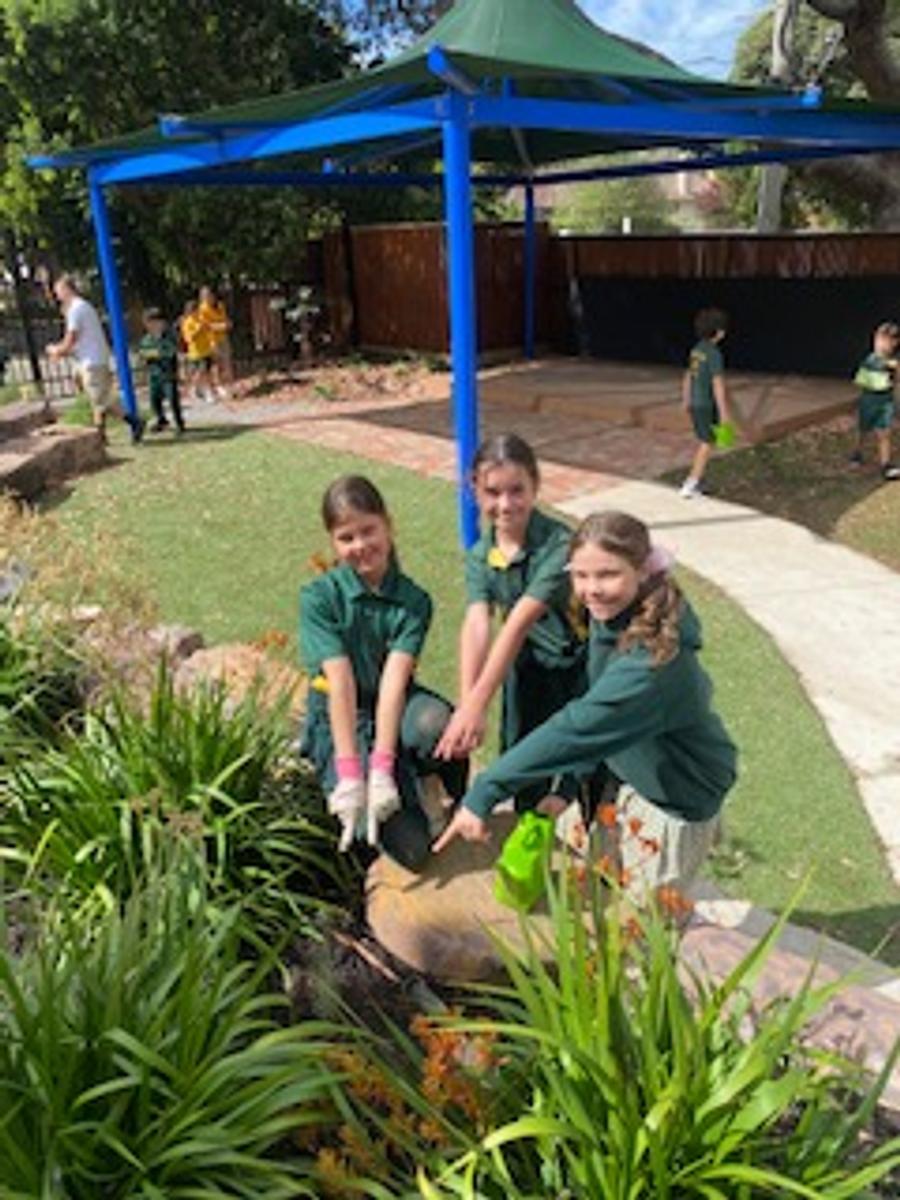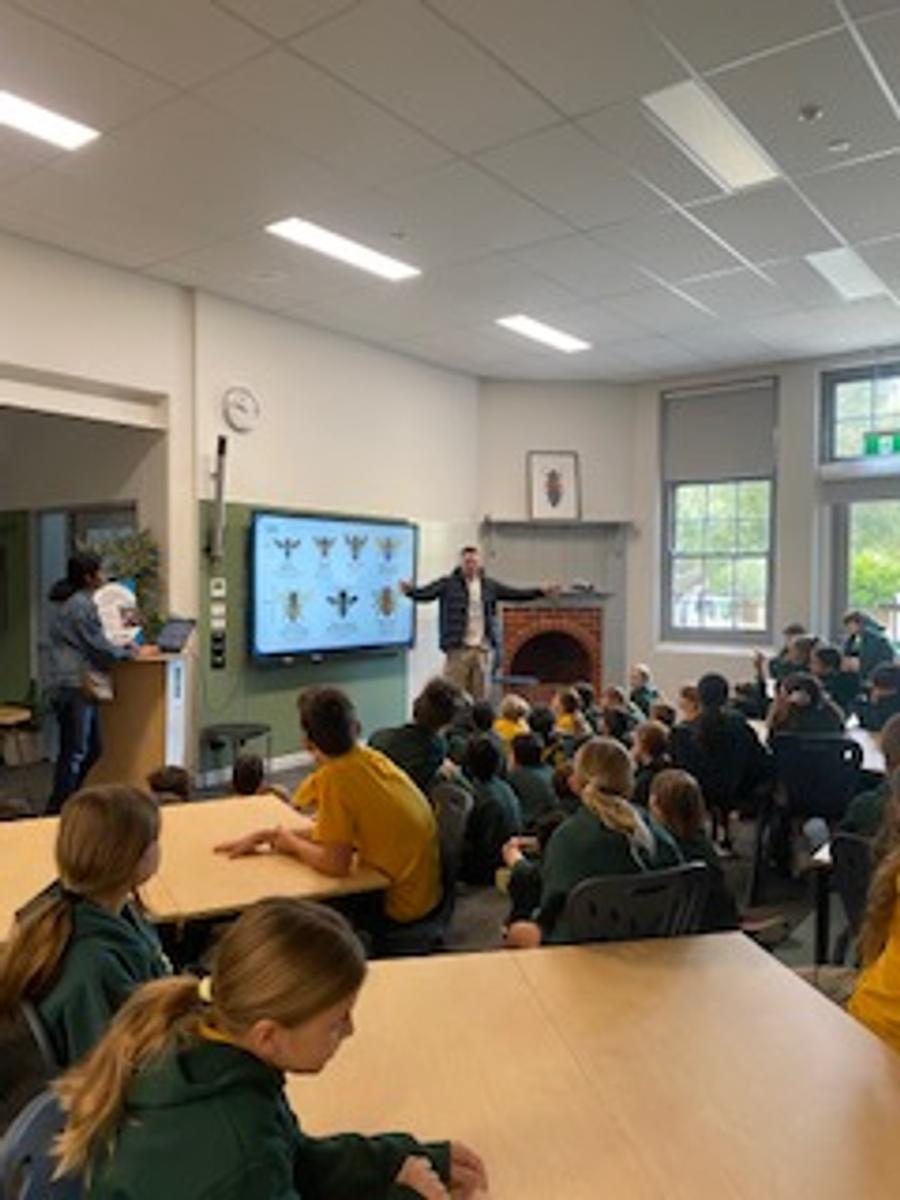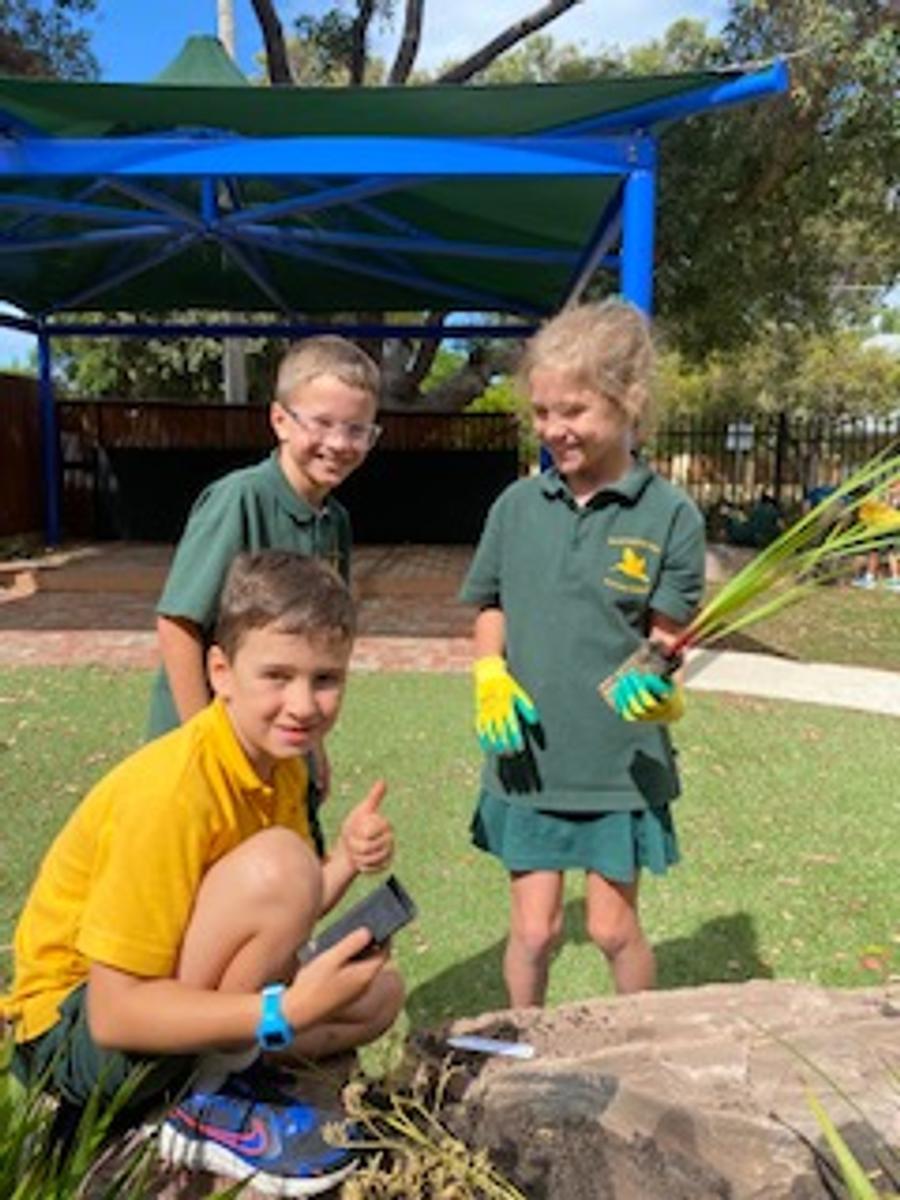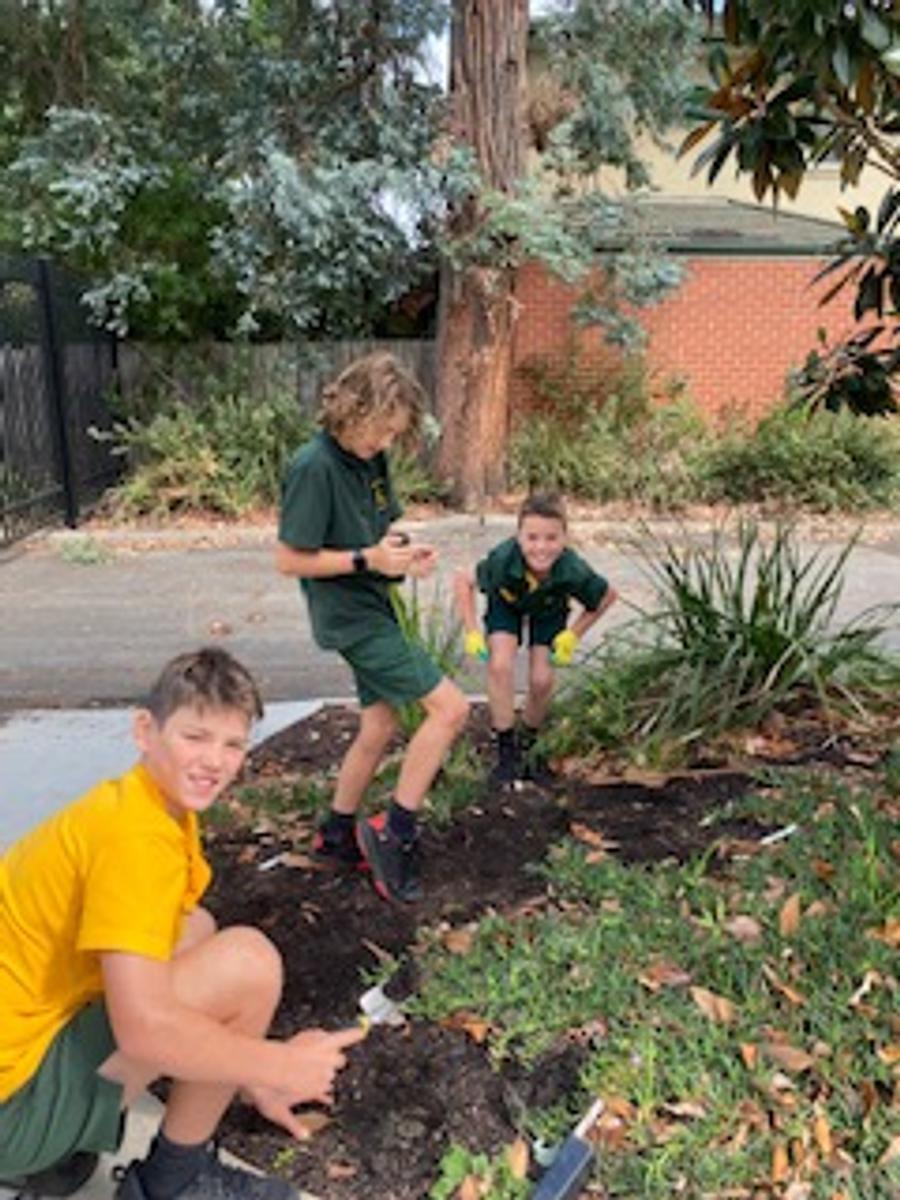Level 4: Connect

Level 4 2025
Lisa Fennessy & Isabella Nocera 4A
Tilly Van & Marc Restaino 4B
Michelle Stainforth 4C
General Reminders
Please remind students to bring the following to school each day.
- Hats are required to be worn outside during recess and lunch.
- Diaries - these are our direct form of communication, alternatively you can email you child's teacher through the office.
- Fully Charged Laptops everyday
- IMPORTANT DATE: 3/03/25 B&B Highway Planting seeds incursion Session 2.
Incursion: B&B Highway Planting Seeds 17th March
On Monday, the Level 4 cohort took part in the first session of the B&B Highway Planting Seeds. B&B Highway ran a program that explored how we can understand and promote biodiversity in our local area. After learning about pollinators and plants, we put our new knowledge into practice by constructing a pollinator habitat and planting native plant species in our new front garden area.
By planting native plants in our school community, we can try and create a 'highway' passage for bees, birds, butterflies, bats, beetles and other little critters through green spaces across the Bayside area. We look forward to the 28th of March, when we get to enjoy the second session with B&B Highway.
Inquiry:
For our focus on Health and Well-being in Inquiry, we have been unpacking how our contribution to creating safe spaces in the school community involves our efforts to interact with others positively, move safely, and be considerate in our actions towards ourselves and others. We put this skills to the test through playing active games, acknowledging how coming together as a team requires us to show empathy, respect, and consideration to others.
With a focus towards empathy, students began planning an 'empathy comic', creating their own stories to share how we can support our friends and peers. We explored character traits and how we can recognise the traits that help us sustain positive relationships with others.
Literacy:
(NEW) In our upcoming fortnight of literacy, students will continue to make their writing descriptive, engaging and practise techniques authors use. Students will continue to develop their writing skills by exploring the techniques that great authors use to bring their stories to life. The students will be focusing on three important writing tools: direct speech, similes, and metaphors.
Direct Speech helps make characters feel real by showing exactly what they say. Instead of writing The boy was scared, a student might write: “I don’t want to go in there!” Jack whispered. Using quotation marks and punctuation correctly makes writing clear and engaging.
Similes compare one thing to another using “like” or “as.” For example, Her smile was as bright as the sun paints a vivid picture in the reader’s mind.
Metaphors go a step further, stating that one thing is another to create strong imagery. Instead of saying He ran fast, a student might write: He was a rocket speeding across the field.
We have been exploring how good writers don’t just tell a story—they show it. They choose strong words, create interesting characters, and make readers feel as though they’re part of the action. We continue to encourage students to read widely, experiment with language, and take risks in their writing.
Why not encourage your child to share a piece of their writing at home? Ask them how they’ve used direct speech, similes, or metaphors in their work. You might be surprised by their creativity!
Reading
(NEW) Across the next few weeks we will continue to strengthen our reading comprehension skills and put these into practice by reading a variety of texts. Our main focus has been the text The Thing About Oliver, however we have also been exploring how we can identify purpose and main ideas from both fiction and non-fiction texts. By unpacking these texts we can not only gain a better understanding of what we are reading, but can begin to identify the authors writing style, and transfer these techniques into our own work!
Something we have been revisiting often is our questions and ideas about a text. Listening to each other share about our interests, challenges, or dislikes about a text can help us form opinions and explore the possible reading genres that are just waiting for us to access!
Core Literacy:
In Literacy, we have been reviewing rabbit words which are words with two syllables. vc*cv (eg. rab / bit). You can listen for each syllable.
In the two syllable words (sup/per and su/per) we double the consonant after a short vowel /u/ because short vowels like protection from the consonants.
Our newest concept we are learning about is the '1-1-1 rule'. We need to check the following: Does the word have 1 syllable? Does it have 1 vowel? Does it also have 1 consonant the end? = If you answered YES for all 3 questions, then we double the final consonant. E.g. Swim becomes = swimming.
Numeracy:
Over the past fortnight, we've been exploring multiplication, division, and measurement in fun and practical ways. Students have been using place value charts to multiply and divide by powers of 10, building confidence in shifting numbers.
In measurement, we've been choosing the right tools and units to measure length accurately in millimetres, centimetres, and metres using rulers, tape measures, and trundle wheels.
We've also been focusing on multiplication and division facts, we are beginning to use arrays, fact families, and strategies like doubling to solve problems efficiently. It's been great to see students strengthening their skills and growing in confidence!
VISUAL ART
Please see the 'Specialist Happenings' section for a special highlight of Level 4 art creations. Love Art! Ms Van Etten.




